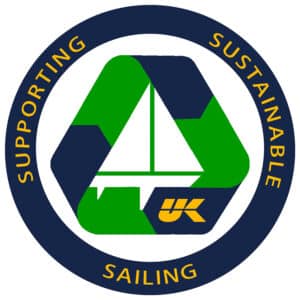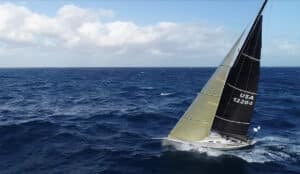The following is a synopsis of the changes to Part 2 the Racing Rules for 2017 written by Dave Perry and is excerpted from Understanding the Racing Rules of Sailing through 2020 available from the US Sailing store (www.ussailing.org or 1-800 US SAIL-1)
Rule 18.2(d) (Giving Mark-Room) Rule 18.2(d) provides a “shut off” time for when a boat is no longer entitled to mark-room under rule 18.2(b) or room under rule 18.2(c) and therefore is no longer “protected” by rule 21 (Exoneration). The “shut off” time is when the boat has been given mark-room, which is when she has been given the space she needs to round or pass the mark on the required side as needed to sail the course, and has been able to sail close to the mark when her proper course would bring her close to the mark.
Rule 18.3 (Tacking in the Zone) is significantly different from the previous rule 18.3. First, it only applies at a windward mark being left to port. This means that when the windward mark is to be left to starboard (such as in team racing), there is no special rule about tacking in the zone, such that if a boat tacks onto port tack in the zone, a boat clear astern is only entitled to mark-room if, when she establishes an inside overlap, the outside boat is able to give her mark-room (see rules 18.2(a) and 18.2(f)). Secondly, new rule 18.3 only applies between a port-tack boat that has tacked in the zone and a boat that has been on starboard-tack since entering the zone. So no longer does rule 18.3 apply between two port-tack boats which both tack in the zone.
Rule 19.1(b) (Room to Pass an Obstruction) closes a loophole that few sailors were aware of, and keeps the game being played the way sailors currently play it at marks. The loophole was that, between three port-tack boats rounding a leeward mark to port, the outside-most boat is an “obstruction” to the two inside boats because they each are required to keep clear of her under rule 11 (windward-leeward). So while the middle and the outside boat were required to give the inside boat mark-room under rule 18.2(b), the inside boat was required to give the middle boat room to pass between her and the outside boat (the “obstruction”) under previous rule 19.2(b). That undesirable conflict has now been removed.
Rule 20 (Room to Tack at an Obstruction) The subtle change in rule 20 is that a boat that has been hailed for room to tack must respond by either tacking or replying “You tack,” even when the hailing boat is not approaching an obstruction. The hailing boat breaks rule 20.1(a) if she hails when she is not approaching an obstruction (and possibly rule 2, Fair Sailing, if she does so intentionally); and the hailed boat can certainly protest after giving the hailing boat room to tack. However the rule writers thought it was safer to require the hailed boat to give the hailing boat room to tack whenever she was hailed, as opposed to giving the hailed boat the right to ignore the hail when she thought the hailing boat was not actually approaching an obstruction.
Rule 21 (Exoneration) has been moved from Part 2, Section C (At Marks and Obstructions), where it just applied to incidents at marks and obstructions, to Section D (Other Rules), where it now applies to any incident where the keep-clear boat is entitled to “room” of any kind, including room under rule 15 (Acquiring Right of Way) and rule 16.1 (Changing Course). The significant aspect of rule 21 is that a boat can be exonerated for breaking a rule without the protest committee (PC) needing to decide that she was compelled to break the rule by another boat which was breaking a rule. In other words, she can be exonerated without the PC needing to penalize the other boat. This allows right-of-way boats to change course and acquire the right of way near keep-clear boats without either boat being penalized as long as the right-of-way boat does not cause contact or any unseamanlike maneuvers by the keep-clear boat.
Rule 22.3 (Starting Errors; Taking Penalties; Backing a Sail) now says that if a boat backs her sail and as a result is moving sideways to windward, she shall keep clear of a boat that is not doing so. This is called “crabbing” and is an effective technique in dinghies on the starting line to move the boat away from a boat to leeward.
Rule 24.2 (Interfering with Another Boat) has previously prohibited boats from interfering with boats that are taking a penalty or sailing on another leg. Rule 24.2 has now added to this list boats that are OCS and are returning to start. The rule has also added an “if reasonably possible” clause to give protest committees some flexibility in applying the rule. And the rule has clarified that this rule does not apply to boats sailing their proper course after the starting signal, meaning it always applies before the starting signal.
The UK Sailmakers rules quiz program, complete with animations and interactive text, is being updated to reflect these changes and will be available from the UK Store shortly after New Year’s Day.




Thanks for the great summary of changes guys! Leigh, Melbourne